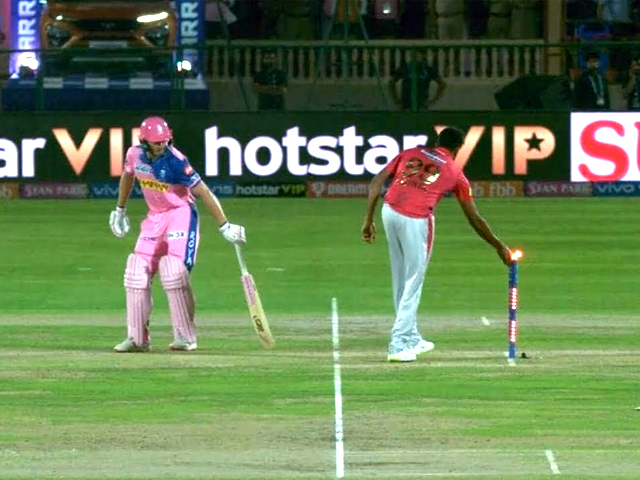
‘Bombay’ vs Mumbai and the not so ‘Independent’ view
Mr Rajan is setting a dangerous precedent and such revisionism can spiral out of control with unpleasant consequences.
The British newspaper, The Independent, sparked a major controversy recently when its editor announced that they would henceforth refer to India’s financial capital Mumbai as Bombay, the city’s erstwhile colonial moniker.
At first glance, the move appears to be a declining and increasingly inconsequential colonial power’s feeble attempt to reassert, or at least relive, its imperial glory. Of course as you scratch the surface, an entirely different dynamic is revealed.
To fully understand this dynamic, it’s worth first exploring the city’s journey from Bombay to Mumbai, which has been almost as remarkable as its evolution from a sleepy fishing village to a vibrant metropolis. Numerous books, songs, and films have featured this larger-than-life city, capturing its many moods and hues. No matter what the name, it occupies a central space in the country’s economy, culture, and psyche.
Bombay was a creation of the British, unlike many other Indian cities that had been settled and were thriving much before the arrival of the Europeans. As a result, along with Calcutta (now Kolkata) and Madras (now Chennai), it had a distinctly British character, quite different from India’s other big cities. The architecture, social infrastructure, transportation, and ethos, all bore a colonial imprint, which eclipsed the underlying Indian identity that also existed in large parts of these ‘new’ cities.
Being a port and a trading hub, it attracted people not just from all over India, but from across the world. The city was known for its cosmopolitan attitude and the opportunities it offered for economic and personal liberty, which in a way became the defining features of ‘Bombay’.
Post-independence India saw itself gradually distancing itself from British influence. It was a slow process and did not gather steam right away. As the reality of political power and independence began to sink in, the Indian identity began to assert itself. Though some customs and practices from the ‘Raj’ continue to this day, most of its legacy has been gradually dismantled. This process played out not just in India, but all across the newly decolonised countries of Asia and Africa.
A lot of this transition was a natural consequence of the optimism and sense of political empowerment that proliferated during those times. Free of foreign domination after many centuries, it was natural for people to seek pride in their own icons and identities, and push them out of the shadow of Western culture.
In addition, for leaders and politicians, who through corruption, exploitation, and poor governance, presided over the steady erosion of hope and opportunity across the decolonised world, asserting the native identity became the preferred way to gloss over their own failures and find support amongst the masses. A convenient way to play this game was to rename cities and roads. India saw a spurt of “renamings” during this period. The new names were often rather forced and not always aesthetic or necessary, but politics and vested interests have a way of hijacking normal and healthy evolutionary processes.
Many in India opposed this. They believed that the British played a part in the country’s history and it would be pointless to try to erase these traces of their influence. Many people had grown fond of these names and liked the charm and the legacy they evoked. As a matter of fact, there are many streets across Indian cities that are still known by their colonial era names, despite having been renamed years ago.
Through all this, Britain kept a graceful distance and has been accepting of them. They may not have been happy about it, but there was little institutional interference, probably an acknowledgement of a vastly diminished ability to influence. If India decided that Bombay was going to be called Mumbai, then so be it. The British establishment was ready to adopt the new nomenclature.
The Independent’s decision to revert to using Bombay was therefore surprising. However, their decision had nothing to do with British colonialism or an attempt to glorify its legacy. It was driven by its India born editor’s stand on the political issues prevailing in the country of his birth. This is a remarkable development. An individual has attempted to reverse a sequence of events that the British government did not interfere with!
Mr Amol Rajan is setting a wrong and dangerous precedent with his activism. He may believe that ‘Hindu nationalists’ or a ‘closed minded view’ is behind the name change, and in his personal capacity, he may call a city whatever he feels like. However, he cannot make it the stated policy of the publication he leads. Such revisionism can spiral out of control in not time, with unpleasant consequences.
He is obviously very heavily vested in the intense political debate in India. Since the National Democratic Alliance (NDA) government came to power in 2014, the voices critical of any assertion of Hindu or Indian identity have grown shriller. This was clearly seen in the ‘award wapsi’ campaign and the ‘intolerance’ debate that raged not too long ago. Though comfortably settled abroad, Mr Rajan is willing to stir the pot back home. He has taken sides and is ready to throw everything he has in support of his ‘side’.
It is also interesting to note that Mr Rajan has chosen to remain silent about Calcutta, his city of birth, which was renamed Kolkata. In the interest of consistency and fairness, he should have also decreed that his newspaper revert to ‘Calcutta’ when referring to the city. The ‘Hindu right wing’ has virtually no presence there, so the so-called ‘secular’ left wing that has held sway in that region is equally culpable of wantonly renaming cities. Then why single out Mumbai and the ‘Hindu nationalists’?
Furthermore, Kolkata has lost a lot of its cosmopolitan character and open-mindedness, so his anguish might be better directed towards fostering change there. Mr Rajan is clearly not unbiased and is furthering his agenda, misusing his influence as an editor.
The Government of India would do well to let the owners and management of The Independent know that it is not amused by this turn of events.
All said and done, it is indeed ironic that the contemporary ideological conflict in a former colony is now manifesting itself in the media establishment of the coloniser. India has come a long way in the last 70 years since independence!
[poll id="436"]




COMMENTS (15)
Comments are moderated and generally will be posted if they are on-topic and not abusive.
For more information, please see our Comments FAQ